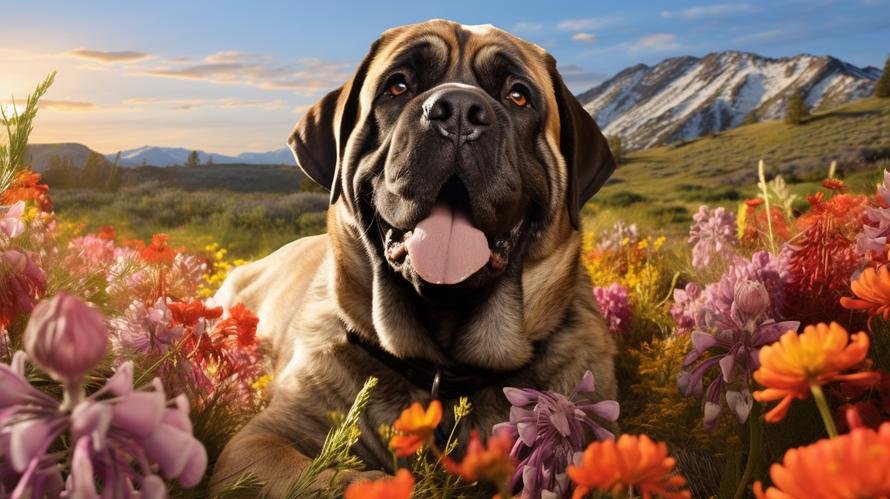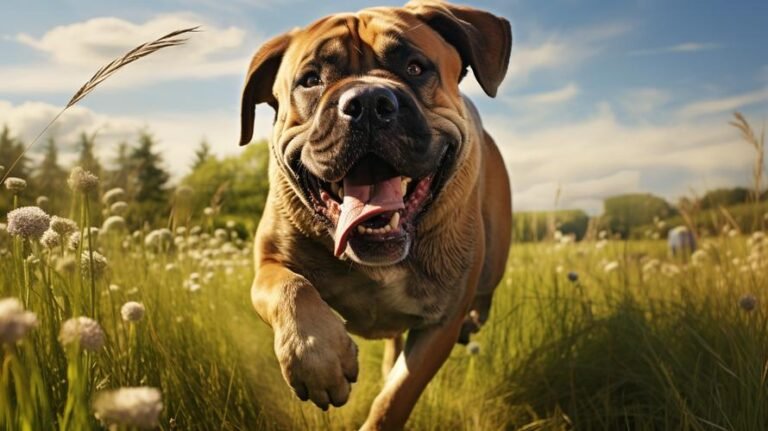Have you ever found yourself strolling down the sidewalk and suddenly obstructed by a tower of fur and muscle, filled with curiosity and a desire to sniff every inch of you? That’s a typical encounter with a Mastiff. With their giant build and intimidating appearance, one of the first questions that comes to mind could be – is this dog aggressive?
Many potentially dangerous encounters start and end with a mutual sniff-over and a giant lick plastered across your face, leaving you wondering about the true nature of these colossal canines. If that has ignited your curiosity, get ready as we delve into the fascinating world of Mastiffs.
The first fact to know is that the term ‘Mastiff’ doesn’t refer to just one breed of dog. Instead, it’s an umbrella term used to categorize several large-sized dog breeds including the English Mastiff, Bullmastiff, and the Tibetan Mastiff. Their enormous size, accompanied by a voluminous wrinkled face and profound strength, might lead one towards labeling them as aggressive breeds. However, judging a book by its cover can be deceiving.
Unwrap the heavyweight box of muscles and what you encounter is a heart of gold. Mastiffs possess an incredibly gentle and calm temperament. Naturally reserved, they are known to be docile giants with an inherent fondness for human companionship. The breed historically known for guarding estates and castles, not out of aggression, but their inborn instinct to protect their loved ones.
In stark contrast to the general perception, Mastiffs shower their family with bouts of love and tend to be quite docile around their owners. They are renowned for getting along well with children with their surprisingly patient and gentle demeanor. However, if provoked or if their family is in danger, they don’t shy away from displaying their strength and protective nature.
But remember, this doesn’t necessarily mean they are vicious or aggressive. On the contrary, aggression in Mastiffs is generally an exception and not the rule. Like any dog breed, their behavior is heavily influenced by their upbringing, training, and socialization rather than their genetics alone.
An interesting fact is Mastiffs, despite their size, tend to be less active compared to other breeds. These dogs are homebodies and prefer lounging around the house to vigorous exercise. This laid-back nature makes them less prone to aggressive behavior frequently associated with higher-energy breeds.
When it comes to training, owner patience is of the essence as Mastiffs can be somewhat stubborn. However, they are eager to please their owners and respond well to positive reinforcement techniques. With early socialization and a loving environment, Mastiffs can grow into well-behaved gentle giants.
All of this doesn’t mean that Mastiffs can’t or won’t be aggressive. Any dog, regardless of breed, can develop aggressive tendencies if mistreated, neglected, or improperly socialized. Aggression in dogs is often a direct result of their circumstances and how they are raised, not their breed or size. Mastiffs do have the potential to be dangerous simply due to their size, but proper training and handling can ensure that they grow up to be gentle and loving.
No discussion about Mastiffs will be complete without acknowledging the tickle-triggers – slobber and snoring. For potential Mastiff owners, be prepared to embark on an adventure filled with drool-drenched floors and late-night snoring symphonies. While these might not be linked directly to aggression, these traits can quiz the faint-hearted. However, for a Mastiff admirer, it adds to the uniqueness of this giant breed.
In the end, a Mastiff will be as gentle or as aggressive as you raise them to be. With proper training, adequate socialization, and a loving environment, a Mastiff can be a gentle giant and a loyal companion. So, the next time you find yourself confronted by a mountain of fur and slobber, just remember that underneath all that brawn is a heart that is equally colossal.



